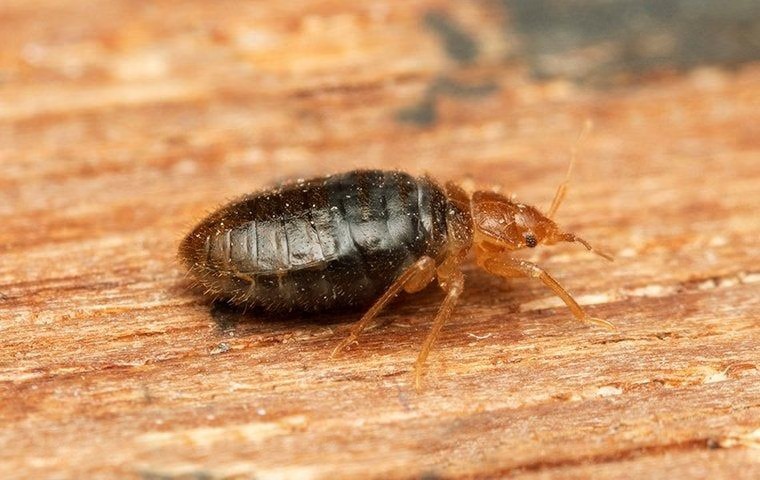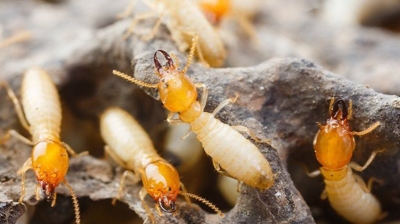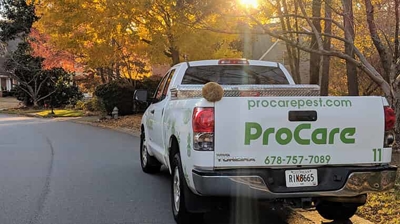
Why Bed Bugs Invade Lawrenceville Homes And How To Keep Them Out
Do you wake up with bite marks on your body and question how they got there? If so, you could be dealing with an active bed bug infestation. Bed bugs are tiny, blood-feeding pests that like to invade homes here in Lawrenceville. Belonging to the family Cimicidae, bed bugs are nuisance pests and don't spread diseases. They intrude on our homes, typically without being spotted, and hide in hard-to-reach places. Bed bugs are prolific breeders and can quickly create a widespread problem that requires professional assistance. Even though bed bugs bite humans and lead to itchy bumps, these pests are not known for transmitting any exceptionally infectious or dangerous diseases. However, this does not mean you should welcome bed bugs into your home.
A bed bug infestation can stir your home, leading to stressful, sleepless nights. It's well known that stress can manifest as physical symptoms, a cause for concern. In addition, although bed bug bites are not harmful, they are irritable and may lead to an infection with repeated scratching.
Waking up with bug bites and realizing you have bed bugs is not how anyone wants to start their day. Fortunately, Procare Pest Services is your local authority on Lawrenceville pest control, and we are here to help! We have prepared this article to offer helpful information about bed bug control. Today, you'll learn why bed bug bites are often the first sign of an infestation, how bed bugs find their way into Lawrenceville homes, how to get rid of a bed bug infestation effectively, and how to prevent future bed bug problems from occurring.
Bed Bug Bites Are Often The First Sign Of An Infestation

If you have bed bugs in your home, you may not know for weeks. Often, identifying bed bug bites is much easier than discovering bed bugs in your home. To detect bed bugs, you need to know what bed bug bites look like, how to identify bed bugs, and where bed bugs hide. If you're fortunate enough to have never had a problem with bed bugs, you may ask, "What do bed bugs look like?" Bed bugs are often described as appearing similar to an apple seed. Their bodies are long, flat, and brown; when fed, their bodies elongate and turn a reddish-brown color. Bed bug nymphs are smaller and translucent or whitish-yellow; if not recently fed, they can be nearly invisible to the naked eye because of their coloring and size. Bed bugs are considered parasites because they feed on the blood of humans and animals. These pests are nocturnal and prefer to hide in out-of-sight areas during the day.
At night, bed bugs will emerge to grab a bite to eat from their sleeping victims. If that weren't creepy enough, bed bug saliva contains an anesthetic that prevents us from waking up when receiving a bite. Bed bug bites appear red and swollen, with a dark spot at the center of each bite. These small, red welts are often arranged in lines or clusters and can be pretty itchy. Scratching these bites can cause them to bleed or become infected and may also leave blood stains on sheets or pillowcases; excessive scratching can lead to secondary infections that require treatment from a medical professional.
Because bed bugs are so difficult to detect, a more accurate way to identify a possible infestation is to look for the physical symptoms of infestation. For example, when cleaning, changing bedding, or staying away from home, look for:
- Dark spots of bed bug excrement may bleed on the fabric as a marker would.
- Eggs and egg casings, which are about one millimeter in length, and pale yellow skins that nymphs shed as they grow larger.
- Rusty or reddish stains on bed sheets or mattresses that caused by bed bugs being crushed.
When not feeding, bed bugs hide in a variety of places. Around the bed, they can be found near the piping, seams, and tags of the mattress and boxspring as well as cracks on the bed frame and headboard. If the room is heavily infested, you may find bed bugs in the following places:
- At the junction where the wall and the ceiling meet.
- In drawer joints.
- In electrical receptacles and appliances.
- In the head of a screw.
- In the seams of chairs and couches, between cushions, in the folds of curtains.
- Under loose wallpaper and wall hangings.
Since bed bugs are only about the width of a credit card, they can squeeze into tiny hiding spots. A good rule of thumb to follow is this: If a crack will hold a credit card, it could hide a bed bug.
How Bed Bugs Find Their Way Into Lawrenceville Homes

Why Choose Procare Pest Services?
-
Locally Owned & Operated
-
Timely Services Available
-
Free Inspections for Your Home or Business
-
Modern & Effective Pest and Wildlife Control Methods
How To Effectively Get Rid Of A Bed Bug Infestation
It can be alarming to find bed bugs in your home, especially if you don't know much about them. We're often asked, "Are bed bugs hard to get rid of?" Unfortunately, the answer is yes. Bed bugs are tricky pests to take on without professional intervention. Even when you take appropriate steps to control bed bugs, you can fail to achieve control or get unwanted results. For this reason, it is always recommended to consult a professional bed bug exterminator for assistance with bed bug control.
Procare Pest Services offers effective home pest control treatments guaranteed to eliminate bed bugs from your home. We begin with a thorough inspection, evaluating every corner of your house for any sign of a current bed bug infestation or conducive conditions that may attract them.
After the inspection is complete, our team will develop a targeted, fast-acting treatment plan to eliminate your current infestation while preventing future incursions. We pride ourselves on being incredibly adaptive and respectful of your home's boundaries. Therefore, our technicians never set foot inside your house without your permission.
Finally, we will schedule follow-up visits to ensure your home remains pest-free once our initial treatment is complete. We will continuously visit your property to check for the signs and symptoms of pest activity during quarterly treatments.
-
"They also make things convenient and easy"
Always love how friendly the techs are.
Ashlae P. -
"I called Procare and I will continue to use them for all further pest control needs"
After a termite swarm invaded my kitchen I called multiple pest control companies and no one could come out to help until next Tuesday.
Lilly G. -
"He is Procare’s shining star"
Brandon is awesome and always does an outstanding job for us.
Brue W. -
"Very knowledgeable and was patient with all our questions"
First time customer. Scheduling was a breeze and they sent me lots of reminders.
Dave J.
How To Prevent Future Bed Bug Problems
Regarding bed bugs, you can take a few steps to prevent these pests from moving in. These tips can help you stop a bed bug infestation before it takes hold making it more difficult to remove.
Below are some helpful bed bug prevention tips from our local bed bug professionals:
- Wash your clothes with hot water and dry them on high heat after returning from travel.
- Always elevate luggage in hotels or motels and on public transportation to stop bed bugs from crawling on them.
- Check for bed bugs such as red staining and bed bug bodies in accommodation areas or other structures.
- Leave secondhand items or furniture outside overnight on a white sheet to check for bed bugs; staining and sightings of bed bug bodies mean the item is infested.
- Vacuum interior areas and wash fabrics regularly to eliminate undetected bed bug hitchhikers before infestations grow out of control.
If you are struggling with an active bed bug infestation on your property despite following these tips, contact our expert residential and commercial pest technicians at Procare Pest Services. Only professional help can assist you in totally removing bed bugs from every hidden area of your property. Call Procare Pest Services for reliable residential pest control in Lawrenceville.
Complete the form below to request your quote.

Stay In The Know
-
 How to Tell If There’s Wildlife Activity in Your Home (and What to Do About It)Read More
How to Tell If There’s Wildlife Activity in Your Home (and What to Do About It)Read More -
 Keep Your Atlanta Home Fly-Free: How Procare Manages House Flies, Fruit Flies, and Other Nuisance FliesRead More
Keep Your Atlanta Home Fly-Free: How Procare Manages House Flies, Fruit Flies, and Other Nuisance FliesRead More -
 DIY pest control?Read More
DIY pest control?Read More -
 Procare: The Best Pest Control Solutions for Atlanta BusinessesRead More
Procare: The Best Pest Control Solutions for Atlanta BusinessesRead More -
 3 Signs You Might Have a Termite Problem in Atlanta—and How to Spot Them EarlyRead More
3 Signs You Might Have a Termite Problem in Atlanta—and How to Spot Them EarlyRead More -
 Your Year-Round Defense Against Fall Bugs and Joro Spiders in AtlantaRead More
Your Year-Round Defense Against Fall Bugs and Joro Spiders in AtlantaRead More -
 How To Solve Any Fall Pest issue in 2024Read More
How To Solve Any Fall Pest issue in 2024Read More -
 Keeping Spiders Out Of Your HomeRead More
Keeping Spiders Out Of Your HomeRead More









